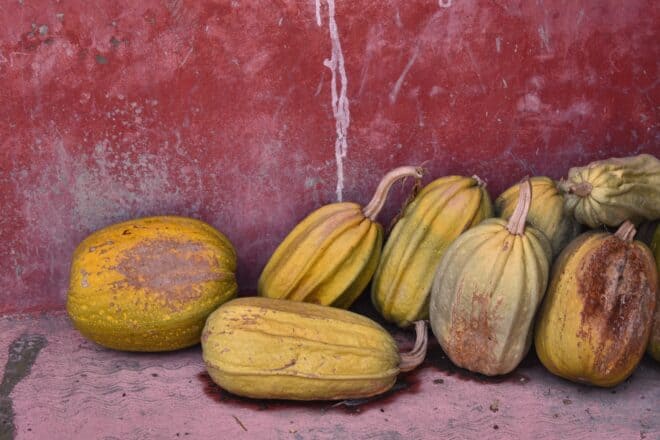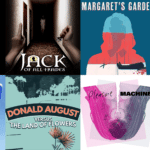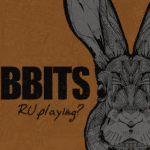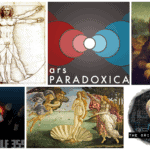The Stale State of Horror Podcasts

How Found Audio Soiled a Genre
My relationship with horror is an odd one. I’m the kind of person who can recall the events of Harlan Ellison short stories and will pass a compliment to any cute girl I see in a Junji Ito sweatshirt while in the same breath admitting I couldn’t sit through SAW.
One of my favorite books is House of Leaves and I’ve got a massive soft spot for Perfect Blue, Black Swan, and the 2018 remake of Susperia but even I still need to use my phone flashlight to walk to the bathroom at night. And it’s just not Halloween until I’ve had a back to back marathon of The Love Witch, The Craft, and Jennifer’s Body but throw Tusk in the mix and the night is ruined.
Horror is such a subjective topic with audiences often leaning one direction or the other on what they consider good, let alone scary so confronting someone with the question of what scares them can vary from the inevitability of death and the possible bleakness of the afterlife or being rampaged by skeleton pirates.
As a fan of consuming multiple pieces of fictional media I can say I’ve never seen more ups and downs than I have with the horror genre and I can confirm the same goes for podcasts.
The Usual Suspects
We’ve all heard it at least once: A crackly found audio occult study done by an ambitious twenty-something exploring some sort of mysterious rural area. Along the way they come across a batch of eclectic strangers, some foes but mostly friends who either encourage or discourage our protagonist’s belief in the supernatural.
Because this abandoned town could be host to a multitude of demons/ghosts/cults/serial killers/monsters or possibly all five because a town with multiple secrets is always better than one.
This is the setup of the typical horror docudrama, something of a stalemate in the podcasting world. And my, how stale it truly is.
It’s Small Town Horror, it’s The Black Tapes, it’s The Last Movie, it’s TANIS, it’s Diary of a Madman, it’s Limetown and Rabbits and it’s making me very bored.
The Public Radio Alliance podcasts (Rabbits, TANIS, The Last Movie) pretty much cornered the market on these types of shows and though I’m always a fan of a juicy mystery, something about their content, as well as those who try to emulate their style, just fails to be scary–which I imagine is a major thorn in the side of something in the horror category. No matter how polished, no matter how expertly produced, the horror docudrama setup has always been such a slog to experience.
Not to be a snob about these things, but something about the formula just reeks of a sort of Blair Witch Project level of predictability, even if you want to liberally call it a homage to the found footage genre.
Give me details about the corpse floating in a fountain at a California strip mall then we’ll talk.
Trends are inevitable in art no matter the medium and even audio drama is no stranger to piggybacking off established success.
Do you remember that time when all horror video games were about zombies and then after PT (the playable trailer for a since-canceled Silent Hill game to be titled Silent Hills) made a splash before getting erased from play stores worldwide, indie developers were renting out one endlessly looping childhood home after the next? And don’t even get me started on horror movies by directors who have only seen Poltergeist and Paranormal Activity in the last ten years and still think the next big thing is haunted houses and creepy kids possessed by demons.
Horror podcasts don’t have many zombies but they certainly have the mysterious identity/mysterious town/mysterious mystery routine down pact. I just feel like horror can be more than just amnesiac discoveries of oneself, of waking up in abandoned rooms with blood under your your fingernails, or creepy strangers and fuzzy, mic interference.
Why is it almost always places heavy with fog and rain and big lumbering trees that have all the ghosts and ghouls? Ever been to a suburb? Wouldn’t the contrast of an idyllic picnic spot or luxurious golf course be all the more interesting if there was a gory murder mystery hidden beneath the surface? A bit of narrative contrast can go a long way and frankly one show taking place in Oregon and the other in Nowhere, Washington is a road trip certainly not worth my gas money.
Give me details about the corpse floating in a fountain at a California strip mall then we’ll talk.
Die Laughing
While still on the topic, I can’t help but mention shows that are still nestled into the horror genre but are defined more as comedies inspired by the aesthetics of slasher films and ghost stories. Combine gore with good laughs and you can produce some interesting results.
Why do you think things like Rocky Horror Picture Show, The Addams Family, and Scooby Doo still thrive even in this climate? If you can’t be the next new scary movie, you can always try to be the next Scary Movie.
Horror is scary, but horror can also be stupid, campy fun, just ask anyone whose seen a Christopher Landon movie. We wear rubber masks and eat our fill of candy not because it freaks us out but because it’s a good time and honestly it’s the shows with spooky hosts rather than spooky circumstances that’s really caught my attention as of late.
Kind of like the second coming of Elvira: Mistress of the Dark, it feels like a commentary on horror tropes while still embracing why exactly we even like this kind of stuff in the first place. (Editor’s note: I simply cannot see an Elvira reference in 2021 without taking time to say congratulations to Elvira for coming out and sharing 12 years with her girlfriend. We queers have always loved you and we love you all the more now.)
There are so many ways to create authentic tension and fear that you may not even need the horror label to sink your narrative claws into listeners.
Less is Morgue has a kitchen sink of undead and otherworldly beings, Haunted House Flippers combines Extreme Home Makeover with Ghost Hunters, and Death by Dying and Brimstone Valley Mall places a lot of the perspective on the titular monsters. If anything, I’ve found I’ve been deeply enamored with horror shows that take the perspective off of the usual human everyman and works to humanize the beasts we’d normally be avoiding all together. And the results are often just so hilarious that you wouldn’t have it any other way.
How to do Horror
Long time readers might know about a past article of mine where I discussed scary moments in otherwise non-horror based audio dramas.
Even podcasts that don’t specifically focus on horror can utilize common fears to generate more authentic stakes. Wolf 359 deals with the psychological effects of isolation and paranoia, I honestly really enjoyed the bite-sized thrillers done by The Long Hallway and the ways the tension just absolutely grabs you in stuff like The Penumbra or Girl in Space is unbeatable.
Then there are more traditional horror shows like I Am in Eskew and The Magnus Archives that approach their concepts from an angle of existential dread with a nice sprinkling of body horror to keep things interesting.
I feel found audio horror podcasts have tried and tried again to zero in on the horror of discovery, of man knowing things man simply shouldn’t know, but it always falls flat as it’s dragged from lab to home to empty town to recording booth over and over again instead letting the impact of the reveal do the talking for them.
And with the primary usually being some sort of monster or event that the whole series is building up to, it often runs into the problem of over-explaining and ruining any potential for a gray area for our imagination to wander.
This breaks such a big rule in audio storytelling where the lack of visual input is entirely the point. Nothing is scarier than nothing, after all.
Read more: The Parapod: The Haunted House Investigation That Lied
For example, one of my favorite minimalist horror shows to this day is SAYER which is nothing like a docudrama but a sci-fi story characterized by its dense, oppressive atmosphere and told from the perspective of an A.I. And though it starts off as this self-contained glimpse into the future, it’s growing cast of characters and world building serves to develop a conflict of conflicting powers, devising a sort of mechanical Cold War.
There are so many ways to create authentic tension and fear that you may not even need the horror label to sink your narrative claws into listeners. After all, not all horror media needs a big scary monster pushed into the forefront, there are already plenty of human fears lurking around our everyday lives.
Horror is Not Hopeless
I’m not implying horror shows can’t accomplish what they set out to do, it’s just that the avenues horror podcast writers take can feel so trodden and overdone to the point it all starts to blend together.
Serial killers and cults and memory loss-those are inherently freaky concepts, but when one show after the other is playing that same tune we’ve heard a million times before it’s not even worth dimming the lights for.
Pacific Northwest Stories makes good, high quality work but it’s reliance on comfort zones has created a template too many people are eager to fill. Horror is hard to pull off but people aspiring to be the next Stephen King need to stop borrowing overused tropes and start looking deep into the kind of scary ideas that will leave listeners speechless, not asleep.
And besides, a lack of originality? Well, that’s simply terrifying.
(Editor’s note 10/15/21: Edits have been made to distinguish the differences between Pacific Northwest Stories, or PNWS, and the Public Radio Alliance, or PRA.)













Comments
Comments are closed.